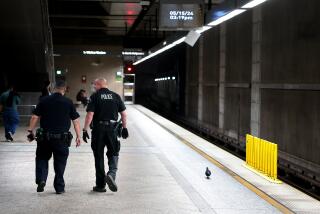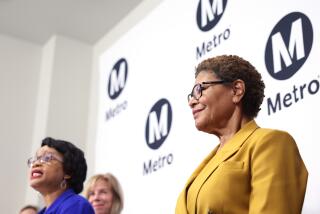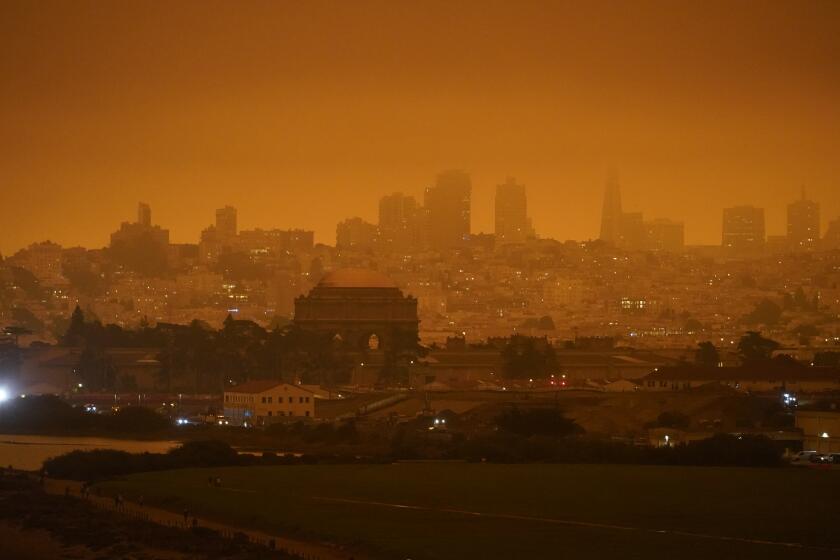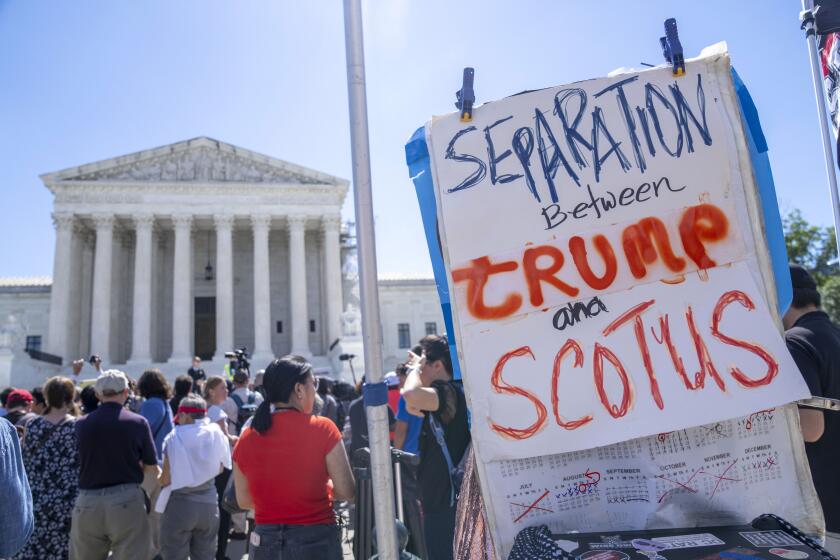Column: Can L.A.’s public transit system survive the pandemic?
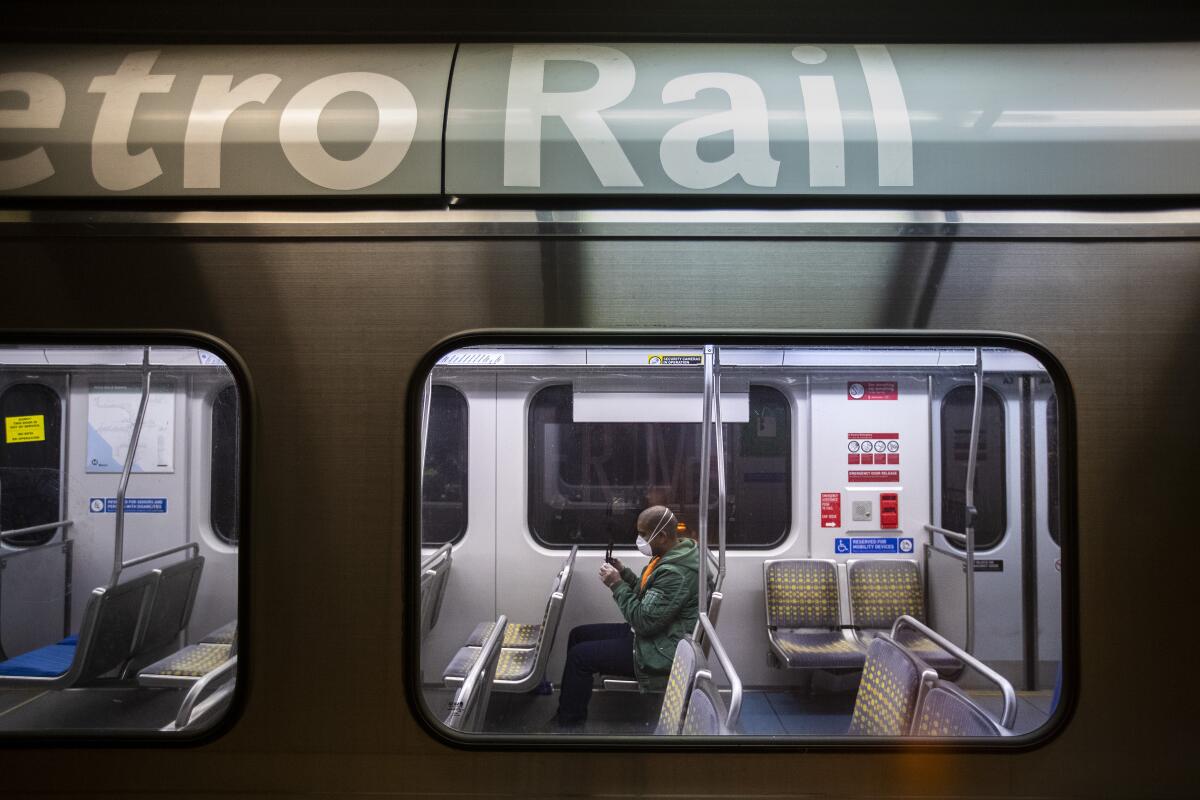
For a public transit system to work well, it needs riders. Lots of riders. But in Los Angeles, the number of passengers has been declining for a long time.
Even before the COVID-19 pandemic struck, transit ridership was moving in the wrong direction, despite voters having approved billions in sales tax dollars through Measure R and Measure M to expand and improve the buses and subways. Between 2014 and 2018, the Los Angeles County Metropolitan Transportation Authority — the nation’s third-largest transit system — lost more than 85.3 million annual boardings on public transit , a drop of more than 17.8%, according to a study by UCLA’s Institute for Transportation Studies.
Then came COVID-19. Stay-at-home orders, widespread telecommuting and fear of being infected in crowded buses and trains cut transit usage dramatically. According to L.A. Metro, average weekly ridership on buses and trains dropped to about 30% of pre-pandemic levels. That has rebounded a bit — to about 50% of pre-pandemic levels as of the end of February. But whether the rest of those transit riders will come back is not at all clear.
Fear of crowds is likely to continue, as is increased working from home. And declining ridership can create a self-perpetuating downward cycle. With fewer passengers, it becomes harder to justify the expense of running the same number of buses and trains, so service is often reduced — leading to longer wait times, a more frustrating experience and a more crowded ride. Sometimes maintenance and upgrades are delayed. Riders who have other options become more likely to use them, says Brian D. Taylor, a professor of urban planning at UCLA.
What’s more, fares from riders pay for a portion of the system. When fare revenue shrinks, more of the system’s operating cost has to be covered by government subsidies.
L.A. Metro said in September that it expected fare revenue to decline by 79%, from $284.5 million in the fiscal year beginning July 1, 2019, to $60 million this year.
With farebox revenues down — and sales tax revenues way down as well, thanks to the pandemic — Metro approved a fiscal year 2021 budget that was $1.2 billion smaller than the previous year’s.
When service is cut, many suffer, especially those who have no alternative way to get around. They are disproportionately lower-income people, people of color, people who can’t afford cars or can’t drive because of a disability or age or for other reasons.
But the problem goes beyond that. Policymakers have long understood that to fight climate change, reduce pollution, encourage tourism, ease congestion, build desperately needed housing — basically, to be a 21st century city — Los Angeles needs a robust public transit system that can move people through the region safely, affordably, efficiently and responsibly.
“There’s a crisis facing the public transportation system in L.A.,” said Genevieve Giuliano, a transportation expert at USC’s Sol Price School of Public Policy. “COVID made a bad situation worse.”
The problems afflicting Metro are not unique to Los Angeles. Public transit systems around the world face uncertain futures. A recent article in the New York Times noted that in Rio de Janeiro, bus drivers haven’t been paid and are on strike; in New York City, subway ridership is at 30% of the pre-pandemic normal; fare revenues have fallen off a cliff in many cities, and service cutbacks are widespread.
Some experts worry that public transit systems will be struggling to recover for years — long after we’ve taken off our masks and returned to work.
Los Angeles has done much to improve its public transit experience. It is currently investing more in transportation than any other city in the country, Giuliano says. New stations are being built, light rail lines have been completed, bus lanes added, and tunnels bored for extended subway lines.
But many old problems continue. Too many buses stuck in traffic. Too much wait time. Too many delays. Too many transfers. Concerns about personal security. Competition from Uber and Lyft.
According to a UCLA study, increased car ownership (made possible in part by low interest rates) was the biggest factor driving down transit ridership even before the pandemic. Public transit in L.A., regrettably, is what economists call an “inferior good”; as its riders grow more affluent, they opt out and buy their own cars. And since COVID-19, many more people have bought them.
If all goes well, new riders will be lured to the system as they feel safer and it becomes easier to get around the region thanks to extended transit lines. Other suggestions for improvement include making the system free to ride (although that would require an additional revenue hit). Obviously, more bus-only lanes would mean less time stuck in traffic — and would give an advantage to transit over private cars.
Many experts say the best way to move people out of their cars and into public transit is to increase the cost of driving. That could mean, for example, higher road tolls or raising the price of public parking. Such policies can be effective, but they’re politically unpopular.
Los Angeles cannot continue on as a gas-guzzling, greenhouse-gas-emitting, traffic-clogged city of cars for much longer. Public transit must succeed and all Angelenos should be rooting for it.
But at the moment, the system faces significant impediments to success. In the aftermath of the pandemic, the immediate challenge will be rebuilding trust in a system that many Angelenos have gotten out of the habit of using.
@Nick_Goldberg
More to Read
A cure for the common opinion
Get thought-provoking perspectives with our weekly newsletter.
You may occasionally receive promotional content from the Los Angeles Times.
